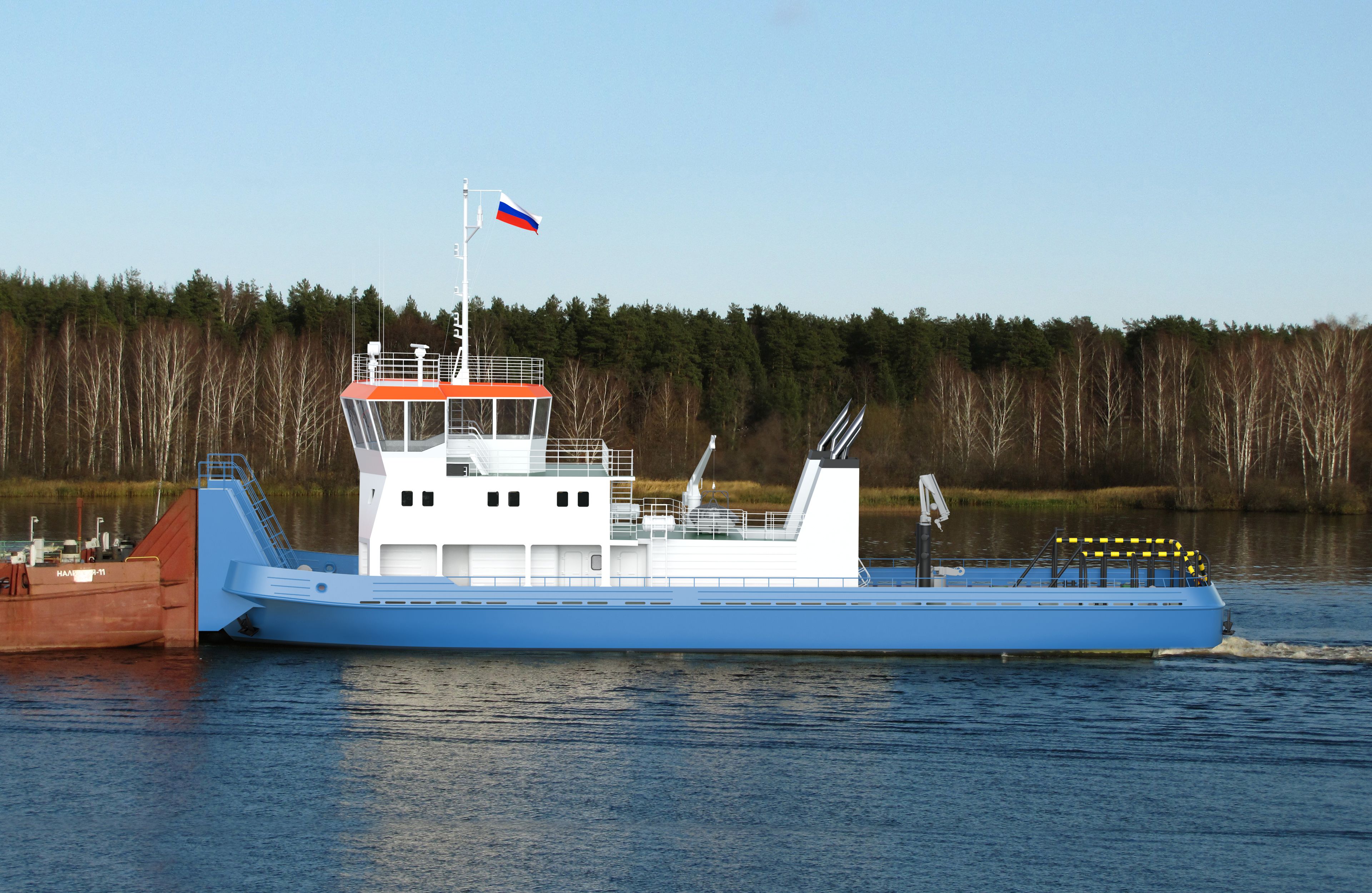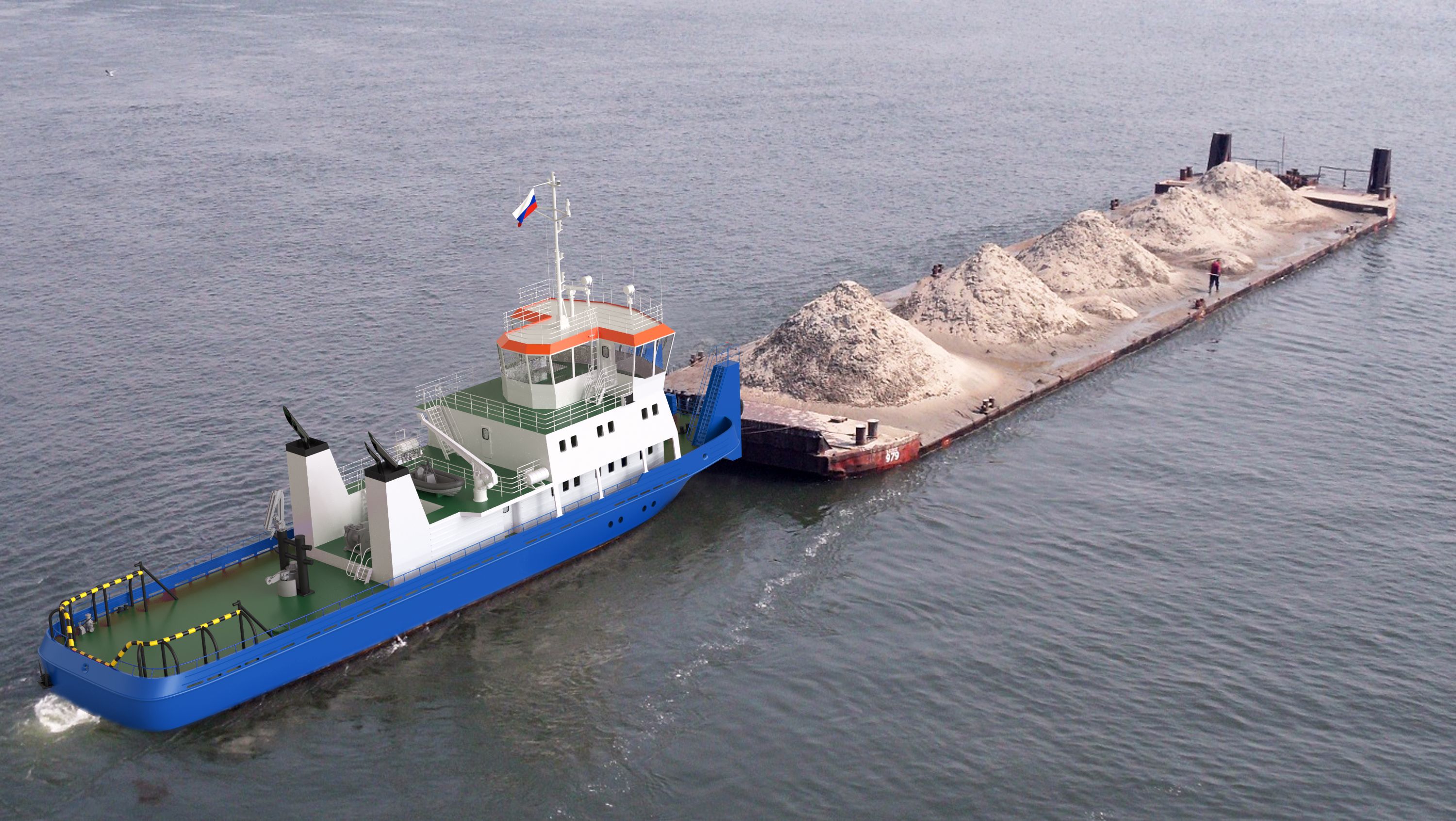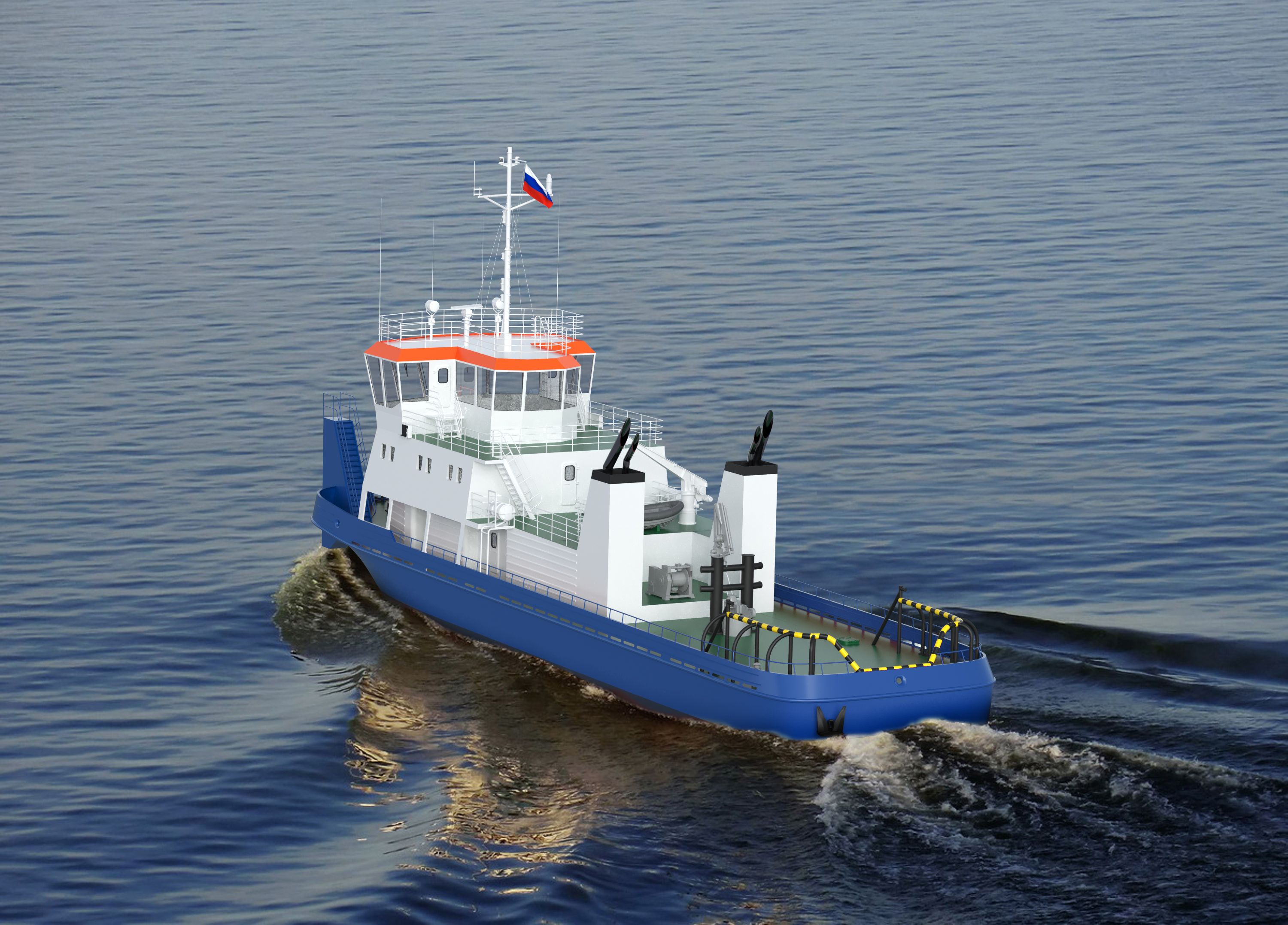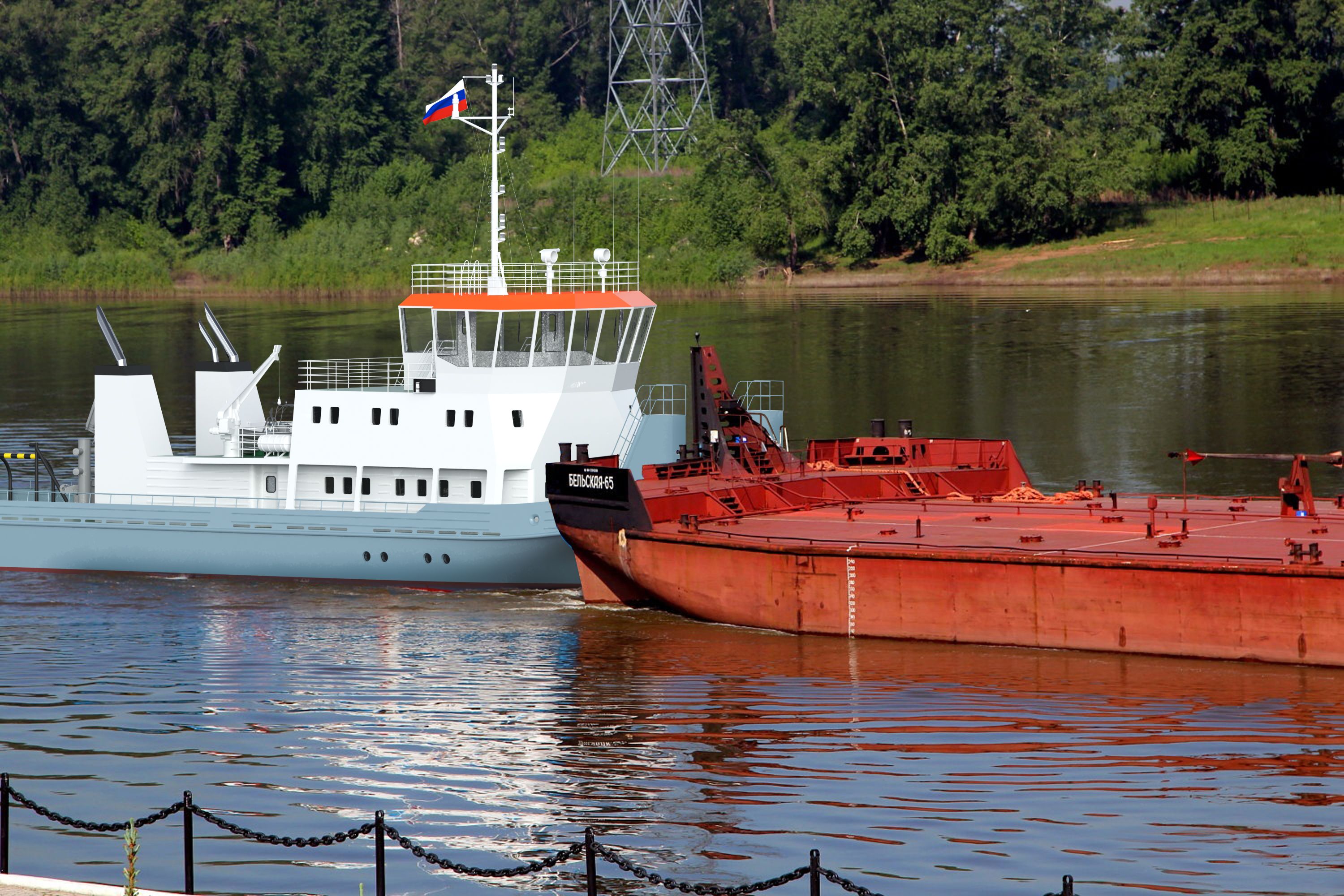Ship class
✠ M-Пр 3.0 (ice) A of Russian Classification Society
Purpose
Towing of non-self-propelled ships and barges (including fuel oil barges carrying cargo with flash point of less than 60oC).

Main Features
- Length overall – 41.5 m
- Length at DWL – 40.5 m
- Breadth overall – 10.2 m
- Breadth moulded – 10.0 m
- Depth amidships – 3.35 m
- Draft in river – 1.6 m
- Draft in sea – ab.1.8 m
- Speed – ab.19 km/h
- Bollard pull – ab.120 kN
- Endurance – ab.15 days
- Crew, pers./berths – 10/12
Power plant
- Type – diesel geared
- Main engines, pcs. x kW – 2x375
- Diesel generator, pcs. x kW – 1x50





